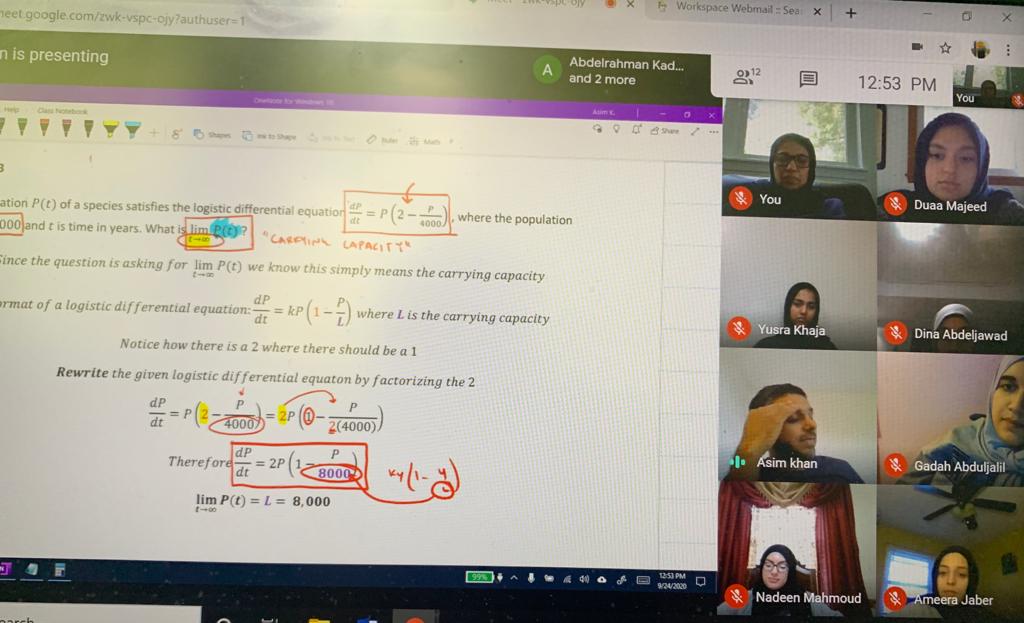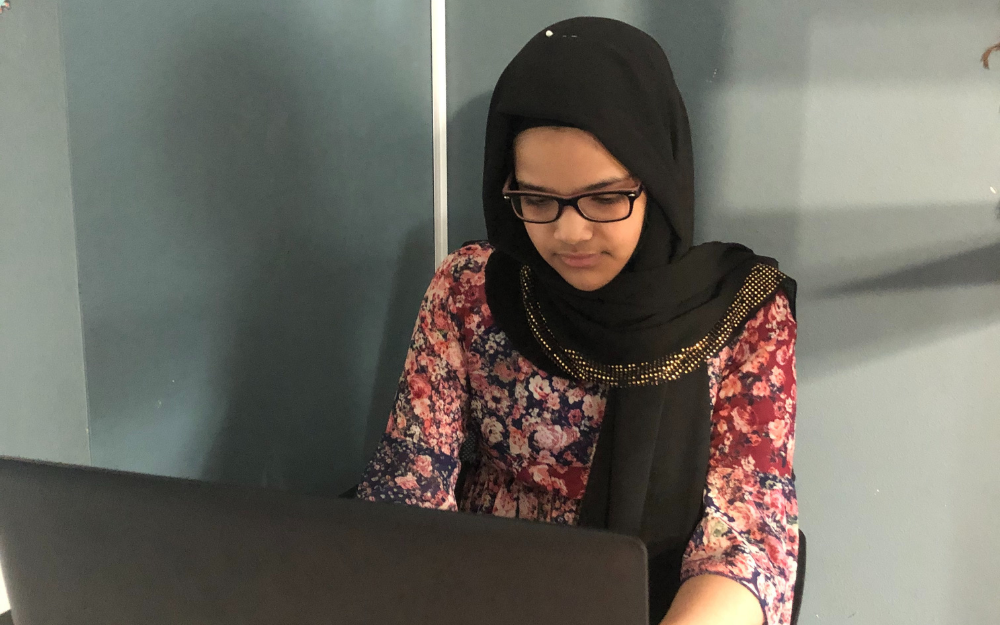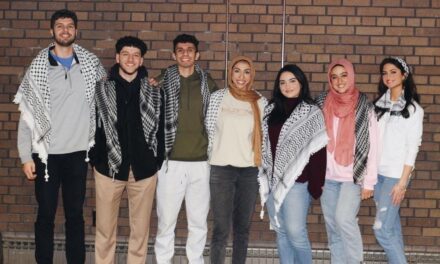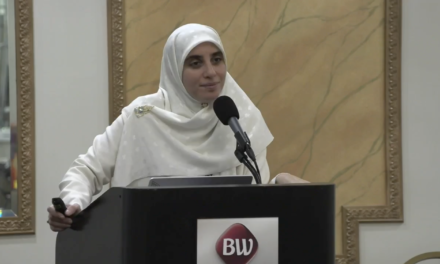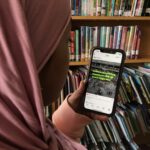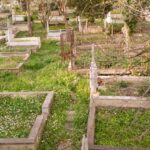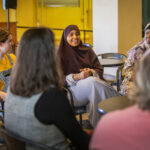Wisconsin’s largest Islamic School has been fully online for one month because of the COVID-19 pandemic. The Wisconsin Muslim Journal checked in to see how this new educational experience is working.
Salam School of Milwaukee includes Salam Middle and High School, 4707 S. 13th St., and Salam Elementary School, 815 W Layton Ave. Together, they have 950 students from pre-kindergarten to 12th grade.
Part I, published last Friday, considered the challenges faced by members of the elementary school community.
Today, in Part II, we examine the virtual experience at Salam Middle and High School.
In middle and high school, teens are deciding who they want to be. They develop a sense of identity, social skills, academic interests, and professional goals. In normal circumstances, much of their time is spent in school, where trusted teachers and counselors, and especially peers, exert considerable influence.
What happens when the physical school, with its classrooms and auditoriums, suddenly disappears from their lives and they find themselves in a virtual environment, seeing their teachers, counselors, and classmates on a screen? Is their learning affected? What about their social and psychological development? How do they feel about it? Salam School students, teachers, counselors, and administrators talked about their experience.
Online education from students’ perspectives
Two Salam School students, senior Duaa Majeed, 17, and 8th grader Maryam Bajabar, 13, were asked to compare their online school experience to in-person learning.
“I have to take more responsibility for my own learning” in the virtual environment, Majeed said. Online classes are 35 minutes, compared to the 45 minutes in regular in-person classes and “that takes away from going into depth with subjects. The teacher can’t give everything on every topic, so a lot of it is self-study.”
“It takes a lot of self-control not to open other things when you’re online,” Bajabar added. “And sometimes Zoom bombers come in. That happened a couple of times.”
And it is harder to develop relationships with your teachers online, said Majeed, who has three new teachers this year. “Normally, when you are in the classroom with a person, you get to know them.”
“It’s a bit more lonely online,” said Bajabar. Like in gym class, “online we do workouts—a mix of different things. One day we might do stretches, yoga, and aerobics, and another day we might do a high-intensity workout. But it is not as fun as playing soccer and basketball with your friends.”
Another con is too much screen time, Bajabar noted. After almost six hours in front of a laptop for school, “kids still want to go online for entertainment,” she said.
There are some advantages to virtual school. “It is more comfortable when you are at your house,” Bajabar said. “And you don’t have to get up early to go to school.”
“Many students are less stressed,” Majeed added. “You get to sleep late. You have more time to do your work. A lot of tests are due at 5 p.m.
“Some of my friends work jobs outside of school and they find it more relaxing than leaving school to go home then go back out to work. Getting from place to place takes a lot of time from our day.
“We are getting a good education, even with the limitations we are facing,” Majeed said. “Teachers are doing a lot of discussions, incorporating information from outside of class, and having students answer questions as part of the grade, which motivates us to participate more. We have to meet the same standards when it comes to tests and quizzes. I’m studying more than I ever have, but maybe it’s because I’m taking three AP (advanced placement) classes.”
As seniors, “we have a Google classroom where guidance is having meetings with us” Majeed Sais. Guidance counselors meet with each of Salam High School’s 44 seniors and their parents in individual Zoom meetings. They also held an online assembly Monday to explain the college application process.
The administration’s communication with students is good, she said. “Brother Shalaby (Head of School Wanis Shalaby) sends a message to students each week with an agenda of anything going on and expectations for the students. If there is any problem or technicalities, he makes sure to inform us about it and to find solutions quickly.”
The most important benefit of online learning is “not to get sick and to save other people,” Bajabar said.
“A lot of my friends have grandparents living with them,” Majeed said. Staying at home is not the best situation but it is much better than getting someone sick.”
The challenges of teaching online
“The most obvious challenges deal with connectivity issues and managing a virtual classroom with dozens of students who each have their own unique challenges,” said chemistry and biology teacher Ms. Sahar Ahmad. “Students may see a teacher simply sitting at her computer, going over the lesson, and assigning homework. What they don’t see is that the teacher is simultaneously managing to troubleshoot so many issues behind the screen. She is not only teaching a new lesson, but also responding to a student’s concerns in a private chat while clicking back and forth to share her screen and trying to monitor any students that may have ‘left the room.’

Administrators meet weekly in Zoom weekly to monitor online learning at Salam School. From left to right, Head of School Wanis Shalaby, Middle and High School Assistant Principal Zehra Tahir, Elementary School Principal Khawla Asmar and Middle and High school AP David Clarke.
“All of this is happening while teachers are attempting to informally assess a student’s understanding in an online class, while constantly reminding them to “turn on their microphone” or to please “mute themselves” so that we are not hearing siblings in their classes dealing with the same issues in the background.
“In addition, formal assessments like tests and quizzes are also difficult to regulate with so many variables that we, as teachers, cannot control in a virtual environment. It’s hard to know whether or not these virtual tests and quizzes can be considered authentic assessments of student understanding.”
Ms. Afnan Ismail and Ms. Sahar Ahmad are co-teachers for chemistry and biology. One of their greatest concerns was that students would not be able to demonstrate science lab skills online. “Thankfully, I have been able to modify my labs with online virtual labs and simulators,” said Ms. Ahmad. “Students can virtually manipulate lab equipment and collect data that they can then analyze and present to the rest of the class using apps and websites that are geared towards enhancing collaborative learning in an online environment.
“While these are all wonderful tools, I am well aware that students may still lack the hands-on science skills that cannot be substituted if we don’t return back to a normal laboratory environment,” she said.
Virtual physical education also has its own set of challenges, said Assistant Athletic Director and Head Girls Basketball Coach Kassidi Macak, who is teaching 7-11 grade physical education and a sports health class for 7-10 grade boys and girls.

Assistant Athletic Director Kassidi Macak.
“Overall, I think students are sitting in front of a computer screen for far too long,” Coach Macak said. “They aren’t having time in between classes to have social interactions with their peers in person.
“And because we aren’t able to play team sports in P.E., they are missing out on lessons of teamwork and the value of working as a team to achieve a goal.”
To help students cope with so much screen time, Coach. Macak stresses “the importance of posture, and the benefit of getting up and walking around, getting outside, or doing some squats and lunges in between classes.”
She selected P.E. activities that require little space and no equipment, like bodyweight workouts. “I think a lot of students are learning a new form of exercise and some will share them with their siblings and parents,” she said.
Since there is no set-up time, Coach Macak has more time to talk with students. It’s an opportunity to teach students life-long fitness and health-related skills.
“I love sharing my nutrition philosophy with the students. I don’t believe in diets. I think you can eat intuitively as long as you have some basic knowledge about calories, macronutrients, and the principle of moderation.”
According to Head of School Wanis Shalaby, the online environment provides opportunities to Salam School’s administration and guidance department to closely follow students’ performance and “keep track of the patterns it reflects and the needs it expresses. This is facilitated through the administrators’ active presence in virtual classrooms, guidance’s regular checking of teacher’s electronic grade book’s and open communication. The weekly harvest of both anecdotal and system-yielded data is discussed during the weekly administration meeting every Friday.”
The view from the Guidance Department
Middle school and high school years are very important in a person’s development, and the role of the school environment is seen as critical, Director of Guidance David Forecki, and Vice-Principal/ Guidance Counselor Zehra Tahir agree. “Young adolescents go through a series of challenges as they seek to establish self-identity, validation among peers and establishment of self-worth amid a host of hormonal and physical changes,” Ms. Tahir said. “Peer approval helps boost confidence, and differences with peers help them learn life-long conflict resolution skills. I definitely believe online is not the best venue for students to have these experiences.”
“In virtual learning, they do not develop the skills to handle indifferent or even negative interactions,” Mr. Forecki added. “They interact with their friends but not with people who are not.”
Adolescence is also when teens clarify their values. “As an Islamic school whose mission and vision is faith-based, values, character, and moral development are a big part of everything we do,” Ms. Tahir said.
Before the pandemic, Salam Middle and High School began each day with an all-school assembly and a collective supplication (Du’aa). Twice a week, the assembly also included value-focused presentations based on verses from the Quran. Once a week students attended an advisory session and engaged in rich discussions to connect Quranic morals to real-life experiences. They also had a daily congregational after noon (Dhuhr) prayer. “These experiences are not possible online,” she said.
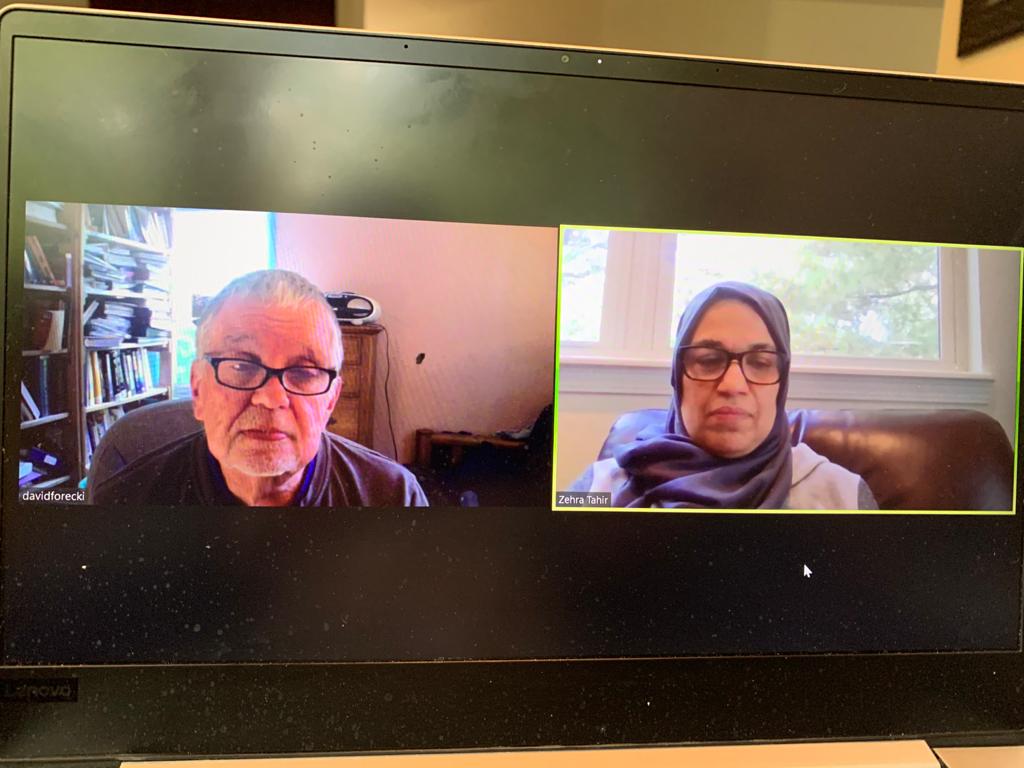
Mr. David Forecki and Ms. Zehra Tahir lead the senior orientation meeting.
“To help maintain the connection with our faith-based identity, the daily schedule has time allocated for the afternoon prayer, and student has a free hour for Friday prayer.” Islamic Studies, Arabic and Quran are also part of the curriculum, she added. Maintaining strong communication with students and their families is ongoing, Forecki said.
“We make a concerted effort, constantly contacting students and parents, so they know they are not alone.”
“With online learning, the role of parents is even more important, as they provide the structure at home to facilitate learning. Since we do not meet students, we depend on parents to partner with us and reinforce expectations,” Ms. Tahir said.
“Fortunately, we have known many families for years,” Mr. Forecki said. “Students do not hesitate to call us with their concerns. Sometimes they actually feel more confident to email us than to meet face to face. It is a little easier, feels a little safer, to send an email.”
For high school students, the Guidance Department aims to provide opportunities to prepare themselves for college. Partners like Alverno College, which offers math and science programs for juniors and seniors, and the University of Wisconsin-Milwaukee, which offers ACT prep, have created virtual options.
“As a school community, we know we cannot equate virtual learning to in-person learning and say there is no loss,” said Ms. Tahir. “Our goal is to minimize whatever negatives we can, to make it as positive, productive and beneficial as possible. When the kids come out of it, it would have been just a phase in their lives; they have no scars.”
The evidence shows students are doing well, she added. “From last year to this year, we had a significant rise in our AP enrollment, from 67 students enrolled in 111 AP courses to 124 students in 161 AP courses. Kids have not given up. Kids are really working hard.” That is a sign they are looking forward, she said.
“As a guidance counselor, one of my main concerns is to keep our student’s spirits up, realizing that we will get through all this, and their future is still bright with numerous opportunities,” said Mr. Forecki. “I want them to know that we’ll get through this together. Better days are ahead!”
